Granite, travertine and marble can make a splash at poolside without going off the financial deep end.
Stone's in the Swim
Photo above and on previous page courtesy Joe Monello
By K. Schipper
The focus on natural stone outdoors usually involves an outdoor kitchen or maybe some veneer -- but one of the best (and most-popular) uses may be underfoot. When even a modest in-ground pool costs $100,000, it’s an investment where people aren’t necessarily going to pinch pennies. And, while some specialty concretes may come close in price, many buyers prefer the good looks of natural stone for both decking and copings. These days, where there is competition among products, it’s with large-format porcelain and sintered tiles that in many cases can simulate – you guessed it – natural stone.
Just how popular is natural stone around the pool? It varies by market, of course, but it tends to make a strong showing nationwide. “I’d say probably about a third of my clients request natural stone up front,” says Ryan King, a designer with landscape design/construction firm Bahler Brothers Inc., in South Windsor, Conn. “When a client is really looking to do a dream backyard, the natural-stone quality and color tone are absolutely phenomenal.” “In our market, stone is kind of the default, at least for the pool copings,” says Daniel Wood, a natural stone and material consultant with Des Plaines, Ill.-based landscape supplier Lurvey. “They may use the same stone or another one behind it, or they may wind up doing an alternative product that is trying to look like stone, such as concrete or porcelain.” It’s even changing the minds of some landscape designers and installers. After a high-end client insisted on using marble for a pool area and two levels of patios, Joe Monello, owner of Wayne, N.J.-based Monello Landscape Industries LLC, says he’s moved away from urging clients to use concrete or brick pavers. “It’s way more versatile than pavers and paver copings,” he says. “We’ve been doing more of it, and every time we don’t use a natural coping, I see a good reason why we should.”
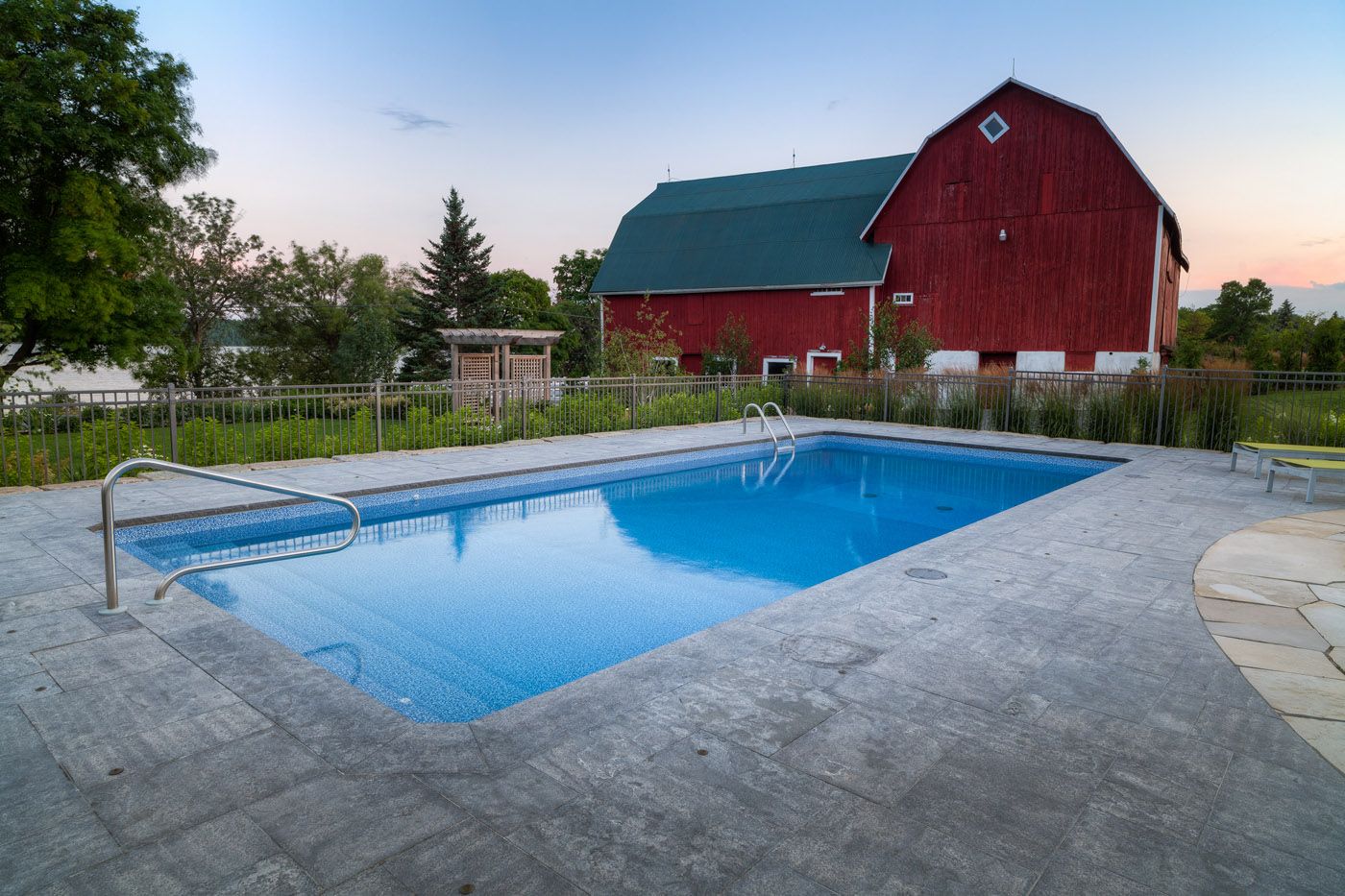
Natural stone can often fit the setting, much like this limestone coping and decking in a peaceful rural setting. (Photo courtesy Oakville Stone)
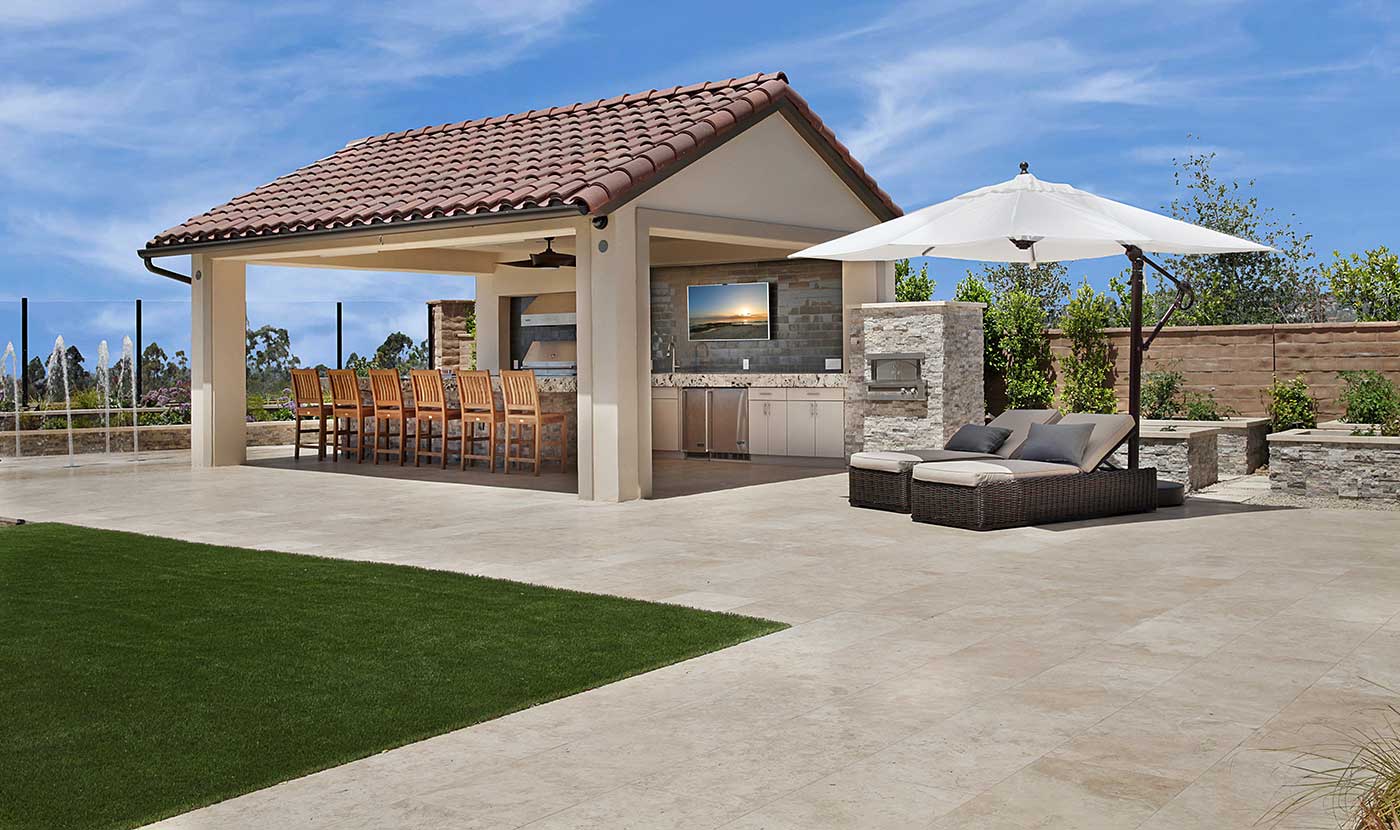
Travertine plays well in a number of settings throughuout the country, whether it's the desert southwest or well-treed northern settings. (Top photo courtesy MSI; bottom photo courtesy Elegance by NT Trading)
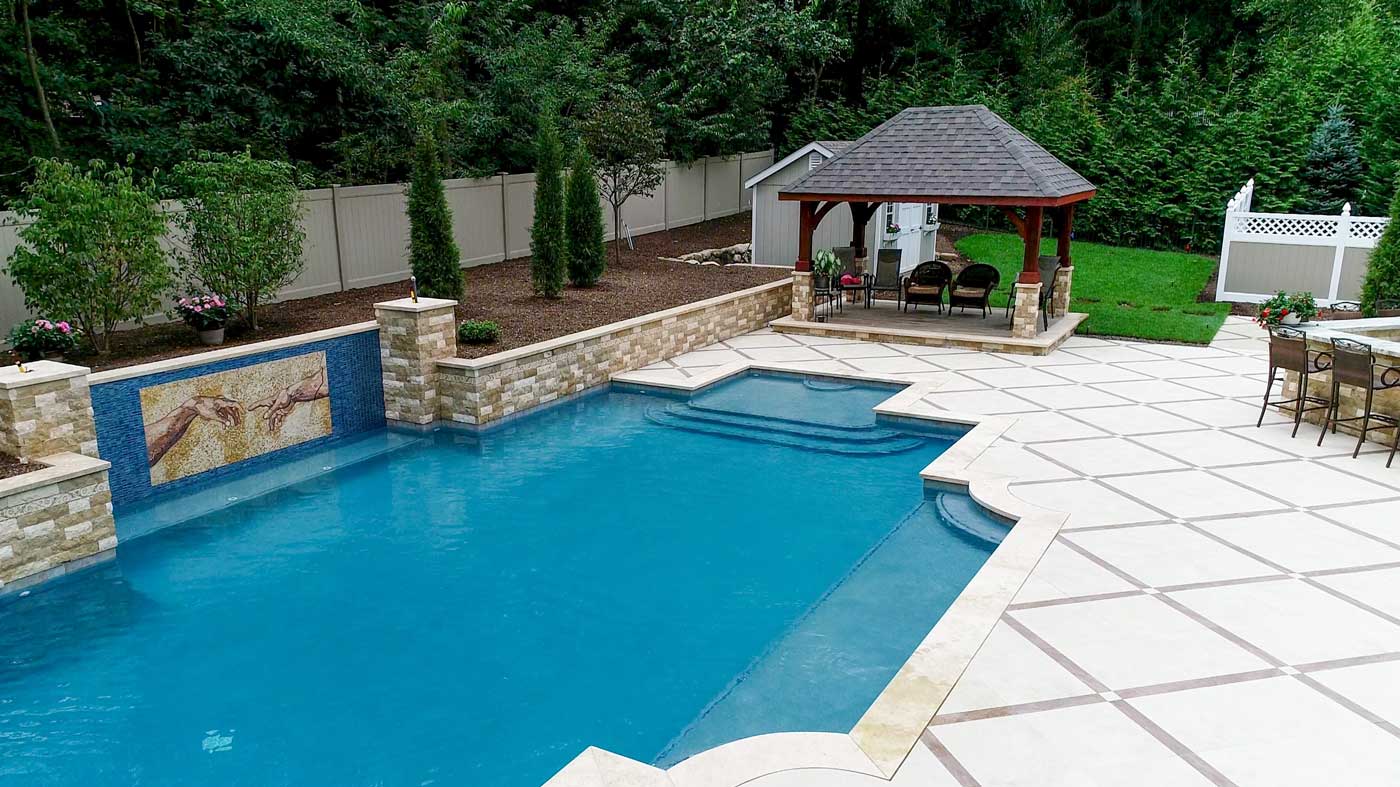
And, while marble doesn’t lead the pack in terms of what’s being used for these projects, it has its appeal. Certainly, a lot of what’s utilized depends on the market and the project.
Daniel Murphy, vice president of Oakville Stone, a wholesaler in Mississauga, Ont., says many of that company’s landscape clients go with a natural-stone coping. The trick to getting a good stone: making sure it’s low-absorption. “For instance, we have limestones that are less than 1% absorption,” Murphy says. “Typically, limestone has a higher absorption rate, so they’re fine for walls and buildings above grade, but for decking or pool copings, you may not want to use it.” Still another possibility, he notes, is granite, again because of its absorption rate. Carlos Chui, product manager for stone tile for Dallas-based Dal-Tile Corp., notes that granite naturally resists the elements and bacteria. Jim Uger, an architectural sales representative with Hawthorne, N.J.-based wholesaler Elegance by NT Trading Inc., agrees with Murphy that absorption is the key. His company is an importer of travertine and marble, and found those stones a difficult sell initially for outdoor use because people were aware of their freeze/thaw issues. “We bring the stronger, denser materials to the Northeast, and it’s done really well,” he says. And, of course, those products can also be sealed to make them more adaptable to long-term outdoor use. “Clients often ask if there’s maintenance to it,” Uger says. “And, yes, you need to seal it. There is an upkeep to it, but it’s not like it’s a lot of work.” About the only type of natural stone that’s not recommended for pool coping and deck use is slate, says Prashant Panchal, senior director of business development for Orange, Calif.-based MS International Inc. (MSI). “Slates can tend to shale when around water,” he says.
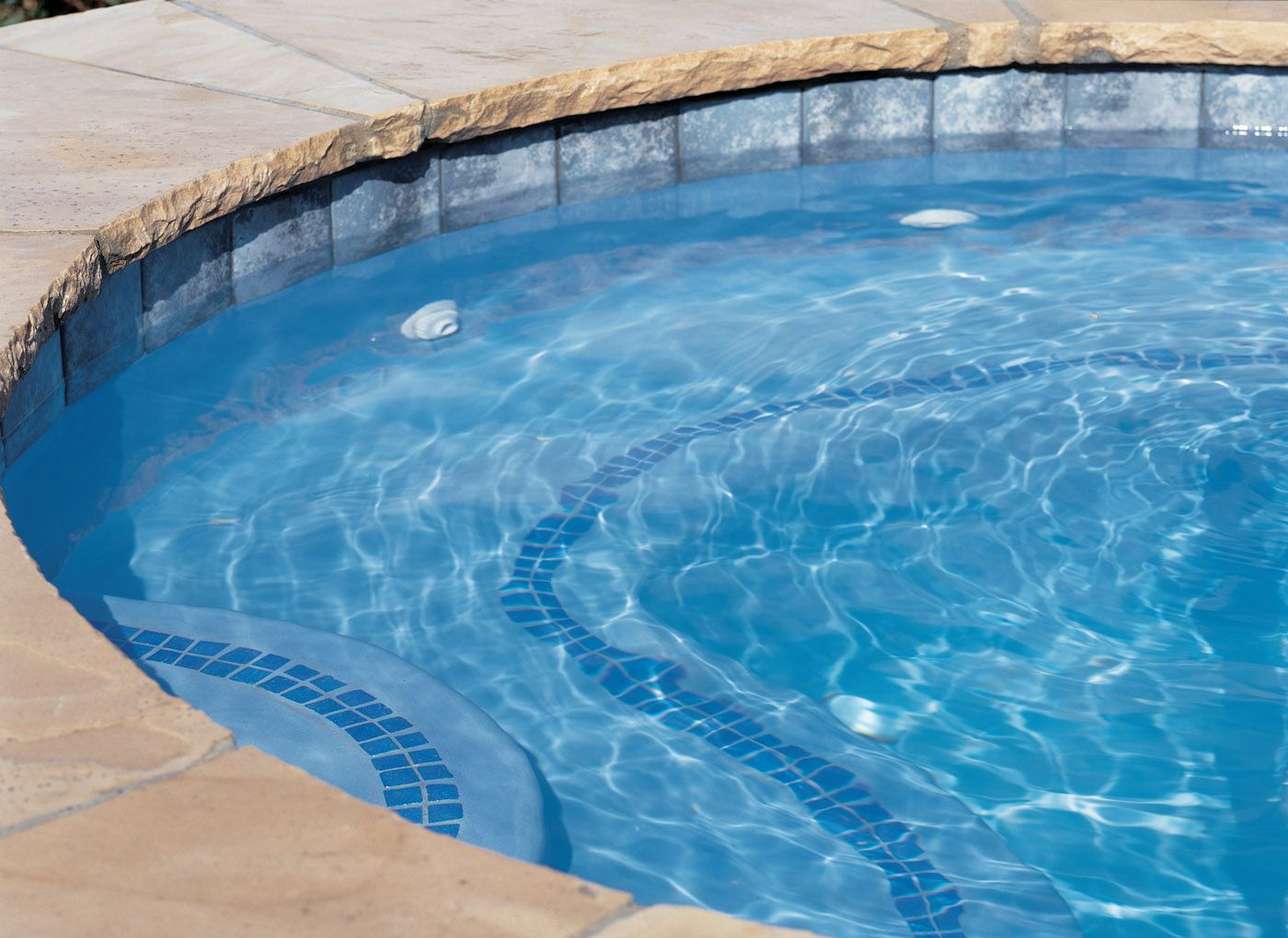
Natural stone can go beyond the usual smooth curves of pavers and poured concrete. Chiseled coping, anyone? (Photo courtesy DalTile Corp.)
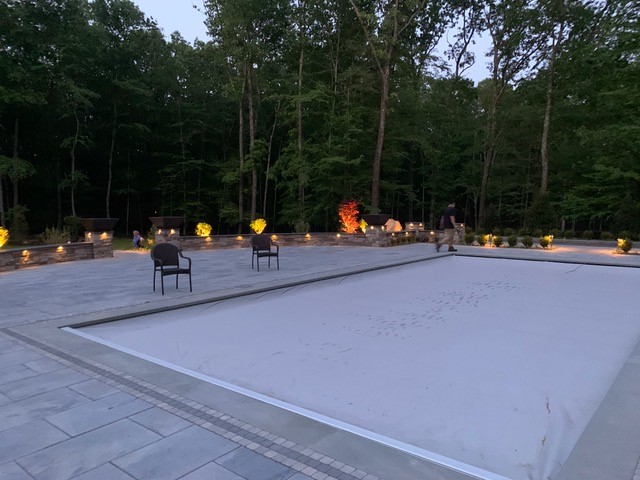
Bluestone offers another tone. Note the pool cover; natural stone can provide solid, deep materials for anchoring cover brackets. (Photo courtesy Joe Monello)
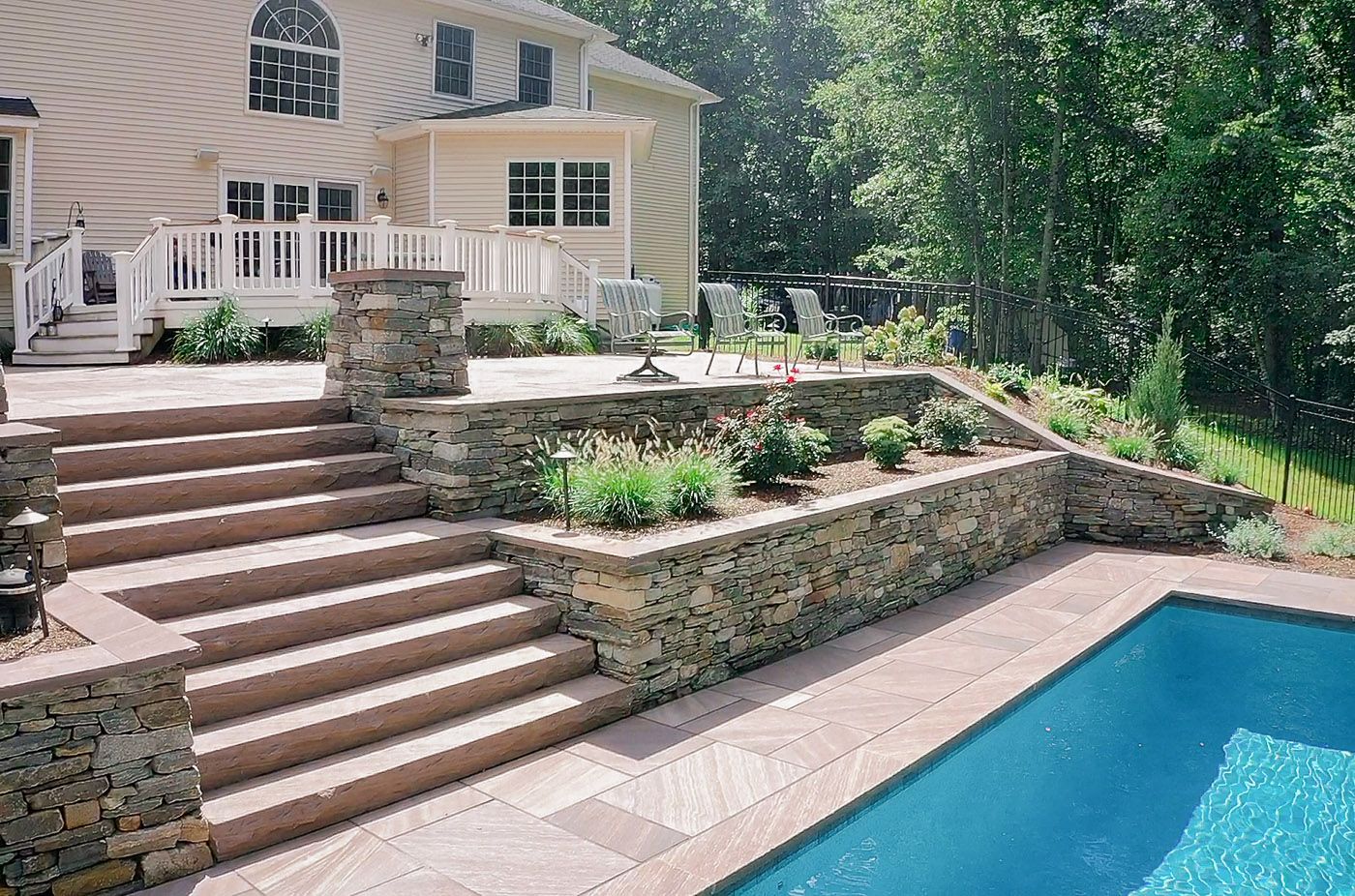
Natural stone can unite an entire outdoor-living setting, going from decking to stair treads to capstones. (Photo courtesy )
Beyond its good looks and durability, there are several attributes that make natural stone a good fit around the pool. “You can buy it in slabs, and you can face it on any angle,” says Monello. “With the paver companies, you’re not able to do that with a lot of products. There are certain sizes and you’re limited in how you can use the coping.” Elegance’s Uger agrees. He says close to 85% of the copings his company sold last year were in 6’ lengths. The only product that comes close to competing with that is larger-format porcelain. “The porcelain is a colored-body material so finishing the edges is an issue,” he says. “With the natural stone, you can have 2” or 3” slabs with whatever edge you want.” While many stone copings are available in lengths up to 8’, Lurvey’s Wood says the best man-made product is about 24”. “A lot of people like the longer pieces that frame the water,” Wood says. “In our market, a lot of people also have motorized units that cover the pool in the wintertime, and the stainless-steel brackets typically need deeper copings, so natural stone plays nicely into that.” And, while other products have their own methods of treating the surface, natural stone has several options for increasing the surface co-efficient to make it slip-resistant. “Various materials such as travertines and marbles have been available on the market with a tumbled surface, but some customers felt they were still too slippery” says Wood. “Now, some of these products are coming out with other surface treatments to provide them with more texture and to have a little more tooth on the surface.” As Bahler Brothers’ King puts it, “Natural stone is very customizable, so if you need a certain thickness or height or look you can pretty much order it however you’d like.” And, because of that, it’s easily carried into all other aspects of an outdoor project. “It can be installed in pool surrounds, decks, exterior floors, patios, steps, walls, cladding, countertops, outdoor kitchens, fireplaces, bars, island bases and grills,” says Dal-Tile’s Chui. To that list, King adds wall and pillar caps, and step overlays. And, Eddie Bedrosian, marketing director for Anaheim, Calif.-based Bedrosians® Tile & Stone, says it doesn’t even have to be limited to a home’s exterior. “We have a lot of clients who will take their matching interior stone tiles and run them all the way through the pool area,” Bedrosian says. While a judicious use of stone will suit the most modern outdoor – as well as indoor – spaces, it also has the surprising ability to work on historic restorations and renovations. Timothy Benz, a designer with Evanston, Ill.-based landscape design/construction firm Nature’s Perspective, says that, when working in historic districts where it’s important to tie into the materials onsite, natural stone is a no-brainer. “Tom [Klitzkie, Nature’s Perspective’s owner] had a project at an historic bungalow that dates back to the early 1900s,” Benz says. “We went into the archives and found pictures, and then he created a combination of stone and brick pavers. The stone tied in perfectly, and it looks like it had been there since Day 1.” It should be noted that most of the pool projects that utilize natural stone are residential. While suppliers, such as Dal-Tile’s Chui, note that it’s an ideal material for both residential and commercial projects (indoors and outdoors), landscape professionals such as Bahler’s King say one issue – surprisingly – can be durability.
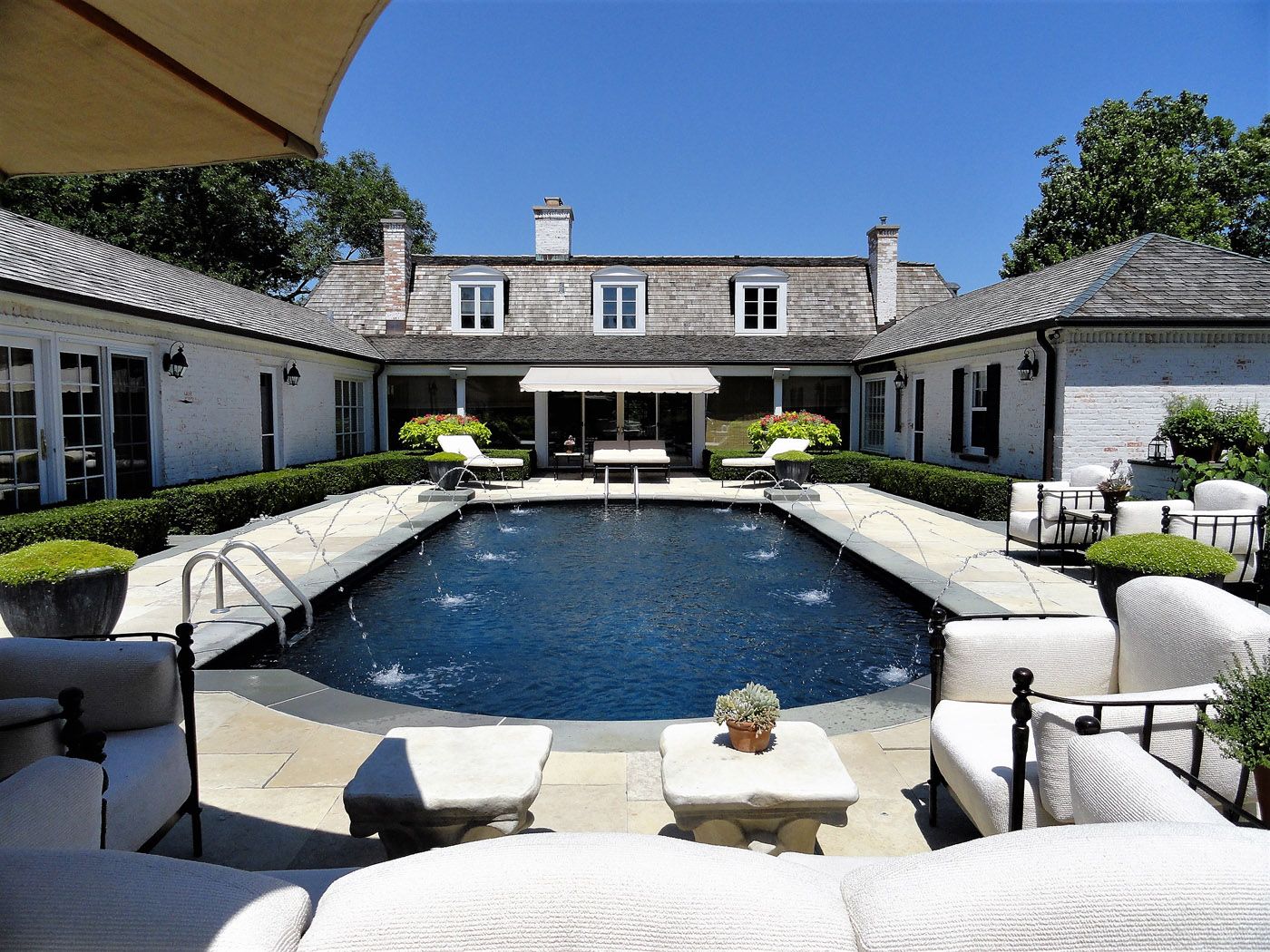
Natural stone also provides a luxurious look that supports enhancements like this relaxing fountain feature. (Photo courtesy Lurvey)
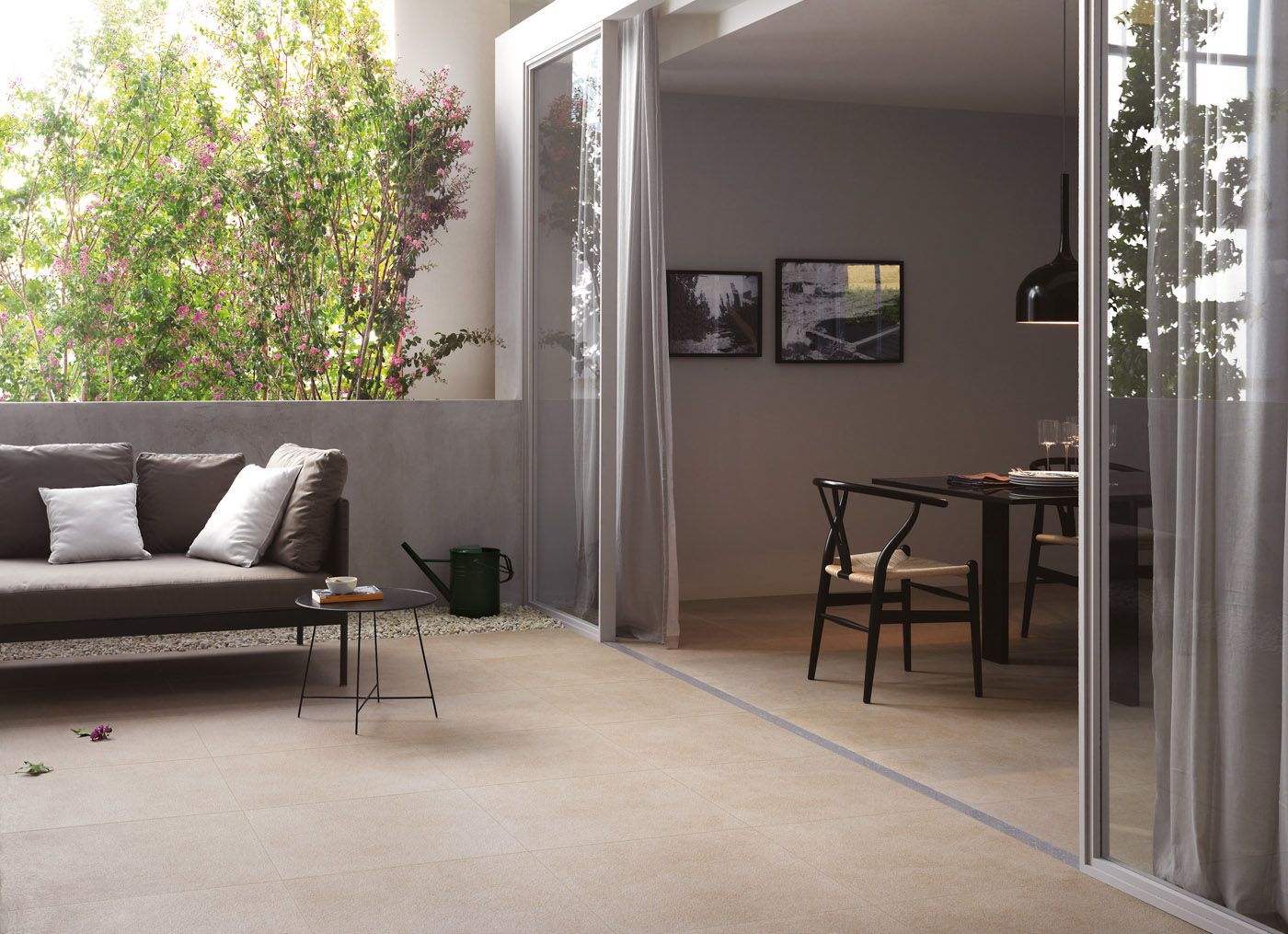
Why stop at the threshold? Some clients prefer taking the same natural-stone tiles used in interior flooring straight out to the pool. (Photo courtesy DalTile Corp.)
“A commercial setting is obviously going to experience a lot more foot traffic,” he says. “Commercial clients are looking for the best warranty they can get, and a lot of paver manufacturers offer lifetime warranties on their products.” That’s not the only reason, though. As a supplier, Oakville’s Murphy notes that often commercial pools are indoor pools done for hotel chains. “They have a spec for cast concrete, so stone isn’t in their repertoire,” Murphy says. “They may be building 10 hotels. They want them all the same; this is what they’ve been using for 10 years, and that’s how it’s going to be.” There’s also a cost factor. Monello notes that, with commercial projects, everyone is looking to save money, and pavers are perceived as being more-affordable. He estimates the difference as being anywhere from 30% to 70%, although he adds that to simply use natural stone for the coping “is not a tremendous part of the budget.” “Pricing varies by market, with pricing for poured concrete being least-expensive and generally increasing for concrete pavers, travertine/porcelain pavers and marble/limestone pavers,” says MSI’s Panchal. “There is some pricing overlap between these paver types.” Murphy estimates there’s at least a 10%-15% cost difference between the man-made and natural products, but he adds that isn’t always the case, especially with some newer composite materials. “Of course, a low-end concrete paver is going to be lower,” he says. “But, there are some high-end concrete products that are sometimes more than stone and they don’t perform as well.” The bottom line with stone around the pool: There’s no reason to stay away from it. “I really enjoy working with natural stone,” says Nature’s Perspective’s Benz. “The beauty, the unique character and imperfections really have a timeless charm. I highly recommend natural stone as an option around pools.” Dal-Tile’s Chui sums it up best. “The right natural stone for the specific application has no limits,” he says.